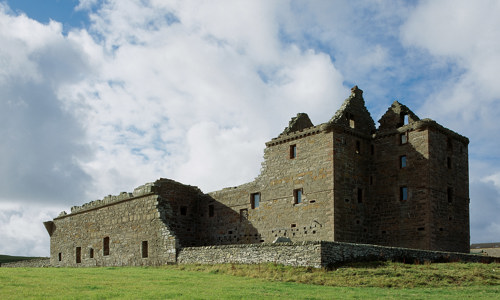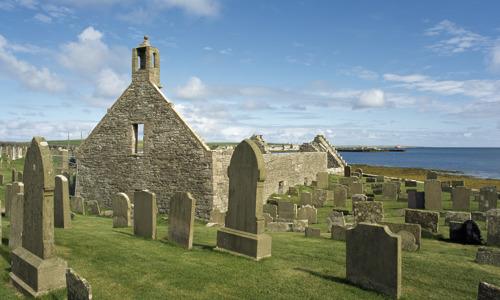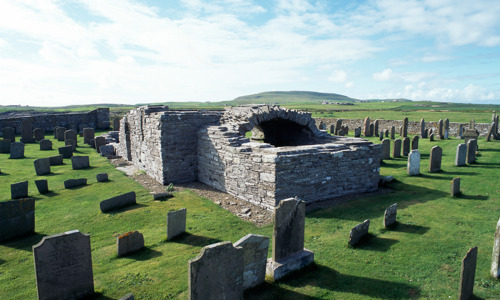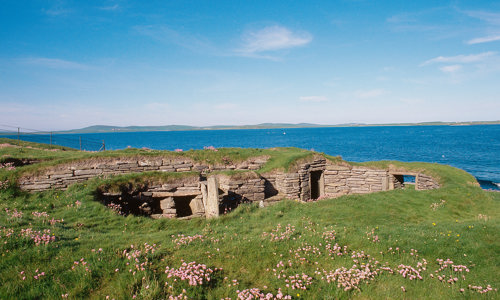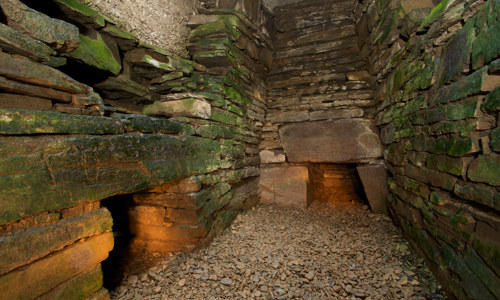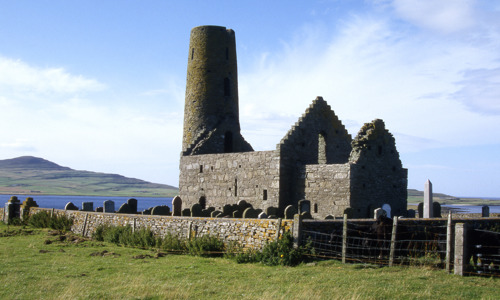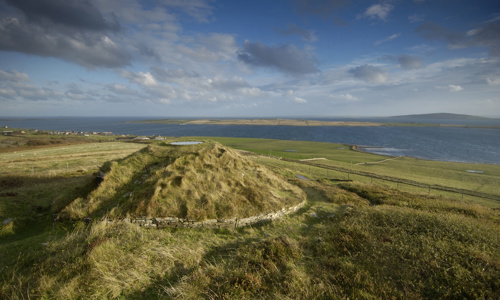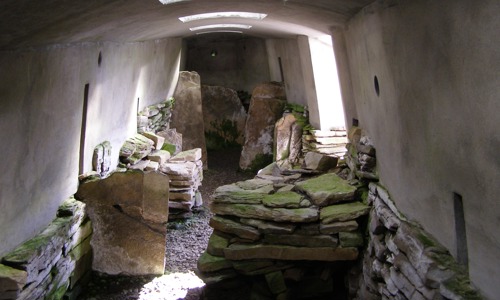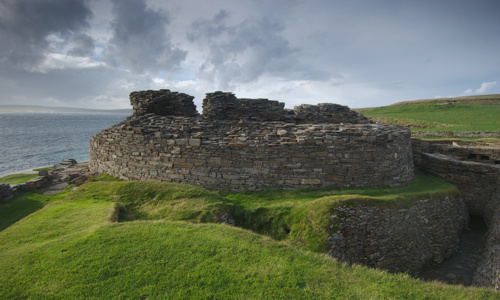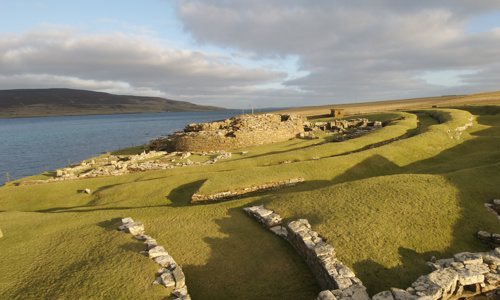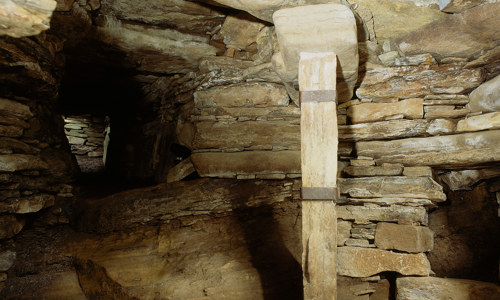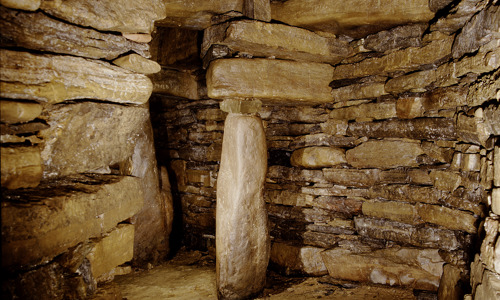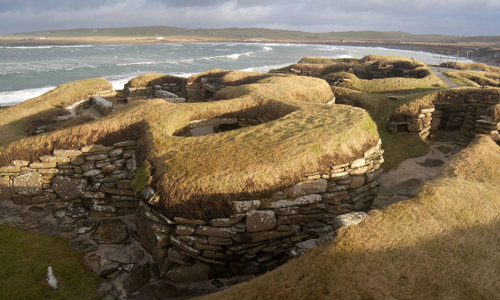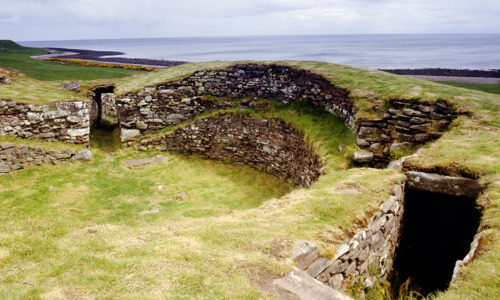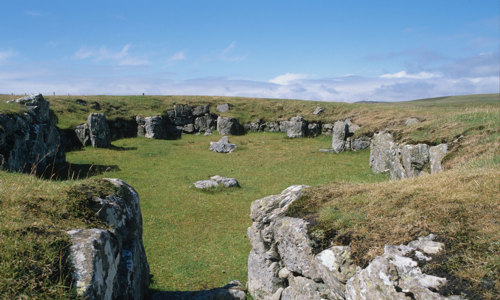History
More than a dozen buildings at Links of Noltland date to the Neolithic period, when early farmers settled here. One of them – the Grobust building – suggests a settlement on this site to rival Skara Brae, the well-preserved Neolithic village on mainland Orkney.
Neolithic midden protected the buildings. The deep layers of waste have also revealed:
• valuable information about the environmental conditions of the time
• many objects such as pottery, stone and bone tools
One such find was the ‘Westray Wifie’ or ‘Orkney Venus’, the earliest artistic representation of the human form to be found in the UK.
It’s thought that the Neolithic buildings were deliberately abandoned, and the small stone figurine (thought to be of a woman) may have been a religious offering closing the site’s use.
Westray’s Skara Brae
The semi-subterranean, multi-cellular Grobust building is built into the sand dunes. Whale rib remains have been recovered from the floor levels and it’s likely that this was used as a roof rafter. The building was deliberately abandoned and infilled in Neolithic times.
Six other Neolithic buildings are clustered together as a group (Area 5) and linked by short passages and surrounded by a large enclosure wall.
All six buildings have:
• very thick drystone walls with relatively small interiors
• central hearths
• stone settings for stone ‘dressers’ (similar to Skara Brae)
‘Structure 9’ in this group is especially fascinating. Large numbers of cow skulls were deliberately placed, inverted, in the foundation of its walls.
Most of the buildings were reused during the Neolithic period. Interior walls were reconfigured into cruciform shape, forming boxbed-like recesses and compartments (again like Skara Brae and Ness of Brodgar, another Neolithic site on mainland Orkney).
Orkney’s largest Bronze Age settlement
The site is also home to at least 10 Bronze Age buildings – Orkney’s largest settlement of this era – which give an amazing insight into this early society.
The Bronze Age buildings are larger than the Neolithic ones and are formed in three main clusters.
The distinctive buildings usually occur in pairs with:
• opposing entrances
• paved shared forecourts
• wall-cores containing midden
Interiors feature orthostats (upright stones) and suggest tether posts for livestock, so animals may have sometimes come inside.
Agricultural field systems surround the settlement, buried in sand. Excavation has uncovered:
• individual ard marks left by Bronze Age farmers’ ploughs
• numerous stone ards (the point of the plough)
A graveyard close to one of the house complexes was found to contain a mix of cremations and burials of at least 50 people. Some of the burials were marked with coral.
Dune consolidation
Historic Scotland has initiated a programme of dune consolidation to protect buried archaeological remains not yet excavated.
This involves:
• remodelling the dune scape – to reduce wind speeds
• planting marram and lyme grasses – for coverage
Visitors should not walk in these areas, which are marked by signs.


